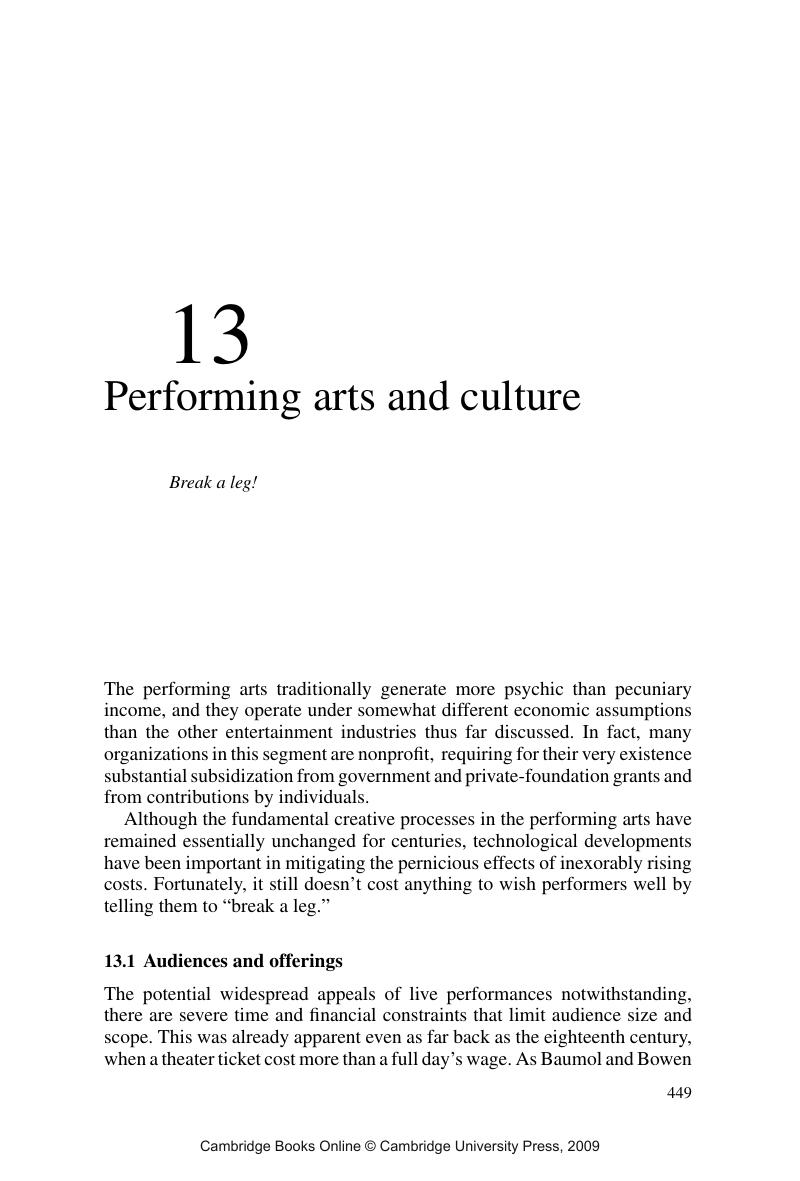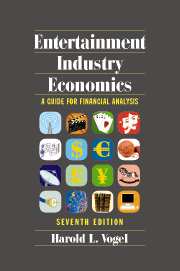Book contents
- Frontmatter
- Contents
- Preface
- Entertainment Industry Economics
- Part I Introduction
- Part II Media-dependent entertainment
- Part III Live entertainment
- Chapter 11 Gaming and wagering
- Chapter 12 Sports
- Chapter 13 Performing arts and culture
- Chapter 14 Amusement/theme parks
- Part IV Roundup
- Appendix A Sources of information
- Appendix B Major games of chance
- Appendix C Supplementary data
- Glossary
- References
- Index
- References
Chapter 13 - Performing arts and culture
from Part III - Live entertainment
Published online by Cambridge University Press: 22 August 2009
- Frontmatter
- Contents
- Preface
- Entertainment Industry Economics
- Part I Introduction
- Part II Media-dependent entertainment
- Part III Live entertainment
- Chapter 11 Gaming and wagering
- Chapter 12 Sports
- Chapter 13 Performing arts and culture
- Chapter 14 Amusement/theme parks
- Part IV Roundup
- Appendix A Sources of information
- Appendix B Major games of chance
- Appendix C Supplementary data
- Glossary
- References
- Index
- References
Summary

- Type
- Chapter
- Information
- Entertainment Industry EconomicsA Guide for Financial Analysis, pp. 449 - 476Publisher: Cambridge University PressPrint publication year: 2007



